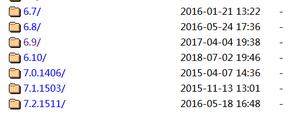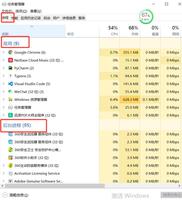Python文字包装和填充
在python中,textwrap模块用于格式化和包装纯文本。有一些选项可通过调整输入段落中的换行符来设置文本格式。
要使用这些模块,我们需要在代码中导入textwrap模块。
import textwrap
构造函数的Textwrapper实例属性如下-
| 序号 | 属性和说明 |
|---|---|
| 1 | 宽度 行的最大长度。默认值为70 |
| 2 | expand_tabs 如果此属性的值为true,则所有制表符都将替换为空格。默认值为True。 |
| 3 | 标签大小 当expand_tabs属性为true时,将有助于使用不同的值设置tabsize。预设值为8。 |
| 4 | replace_whitespace 当值设置为True时,文本中的所有空白字符都将替换为单个空格,默认值为True。 |
| 5 | drop_whitespace 换行后,将删除开头和结尾的空格。默认值为True。 |
| 6 | initial_indent 它将给定的字符串添加到包装文本的第一行。预设值为'' |
| 7 | 随后缩进 它将给定的字符串添加到包装文本的所有行中。预设值为'' |
| 8 | 占位符 它将字符串附加在输出文件的末尾,无论它是否已被截断。默认值为[…] |
| 9 | max_lines 此值将确定换行后的行数。如果值为“无”,则没有限制。默认值为无。 |
| 10 | break_long_words 它将长单词分解成适合给定宽度的单词。默认值是true。 |
| 11 | break_on_hyphens 用于将复合词的连字符后的文字换行。默认值为True。 |
文字包装方法
Textwrap模块中有一些方法。这些模块是-
模块(textwrap.wrap(text,width = 70,** kwargs))-
此方法包装输入段落。它使用线宽来包装内容。默认线宽为70。它返回线列表。在列表中存储了所有换行。
模块(textwrap.fill(text,width = 70,** kwargs))-
该fill()方法与wrap方法类似,但是不会生成列表。它生成一个字符串。超过指定宽度后,它将添加换行符。
模块(textwrap.shorten(text,width,** kwargs))-
此方法缩短或截断字符串。截断后,文本的长度将与指定的宽度相同。它将在字符串的末尾添加[…]。
范例程式码
import textwrappython_desc = """Python is a general-purpose interpreted, interactive, object-oriented,
and high-level programming language. It was created by Guido van Rossum
during 1985- 1990. Like Perl, Python source code is also available under
the GNU General Public License (GPL). This tutorial gives enough
understanding on Python programming language."""
my_wrap = textwrap.TextWrapper(width = 40)
wrap_list = my_wrap.wrap(text=python_desc)
for line in wrap_list:
print(line)
single_line = """Python is a general-purpose interpreted, interactive, object-oriented,
and high-level programming language."""
print('\n\n' + my_wrap.fill(text = single_line))
short_text = textwrap.shorten(text = python_desc, width=150)
print('\n\n' + my_wrap.fill(text = short_text))
输出结果
Python is a general-purpose interpreted,interactive, object-oriented,
and high-level programming language. It
was created by Guido van Rossum
during 1985- 1990. Like Perl, Python
source code is also available under
the GNU General Public License (GPL).
This tutorial gives enough
understanding on Python programming
language.
Python is a general-purpose interpreted,
interactive, object-oriented,
and high-level programming language.
Python is a general-purpose interpreted,
interactive, object-oriented, and high-
level programming language. It was
created by Guido van Rossum [...]
以上是 Python文字包装和填充 的全部内容, 来源链接: utcz.com/z/316334.html






